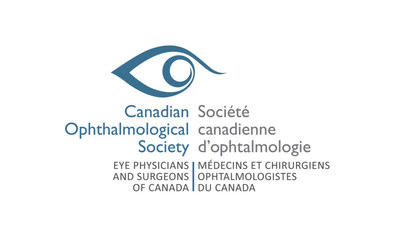Canadian Ophthalmological Society highlights potential new treatments of eye disease during AMD Awareness Month
Clinical trials underway for promising new therapies that aim to enhance the treatment of age-related macular degeneration
TORONTO, Feb. 8, 2022 /CNW/ - Age-related macular degeneration (AMD) is one of the leading causes of blindness in Canada, affecting nearly 2 million Canadians today. As February marks AMD Awareness Month, the Canadian Ophthalmological Society is helping to spread awareness by highlighting the work of Canadian ophthalmologists who are involved in research for promising new therapies that aim to enhance the treatment of "wet" AMD, which is the more severe type of the eye disease.

"At first, you may not notice changes in your vision but as AMD progresses to advanced stages, you may experience blurred vision that may start to appear as a large dark spot, while straight lines might look wavy or distorted," says Dr. Colin Mann, President of the Canadian Ophthalmological Society. "While there is no cure, the good news is that comprehensive eye exams can show if you're at risk of AMD and provide early detection and treatment if needed."
Promising AMD research is being done on many fronts with clinical trials well underway. A number of global Phase 3 clinical trials are assessing new therapies with the goal of increasing durability, reducing treatment burden, and achieving improved efficacy and safety. More options means that patients can have access to "individualized" treatments, as certain therapies may affect and work better for different patients. Applications for some of these therapeutics have already been submitted to Health Canada for review and approval.
"While very effective, many patients require frequent monitoring and treatments, which becomes a challenge for long term care of AMD," says Dr. Varun Chaudhary, Chief of Ophthalmology & Professor of Surgery at McMaster University. "If approved, the groundbreaking therapies being tested in Phase 3 trials could lead to improved outcomes for patients by providing durable options that can significantly reduce the treatment burden on patients."
Additional exciting news for AMD include clinical trials for geographic atrophy – a currently untreatable form of AMD which leads to significant vision loss. These trials are demonstrating some early positive signals and long term data is being collected. In addition, rapid advancements in imaging technologies are allowing eye care specialists to diagnose patients with early membranes of wet AMD before patients develop symptoms. These patients are at much higher risk of requiring treatment within the next year or two, and monitoring schedules can be adjusted to ensure close follow-up and early treatment which is vital for preserving vision in the long term.
There are also important developments in technologies that could allow patients undergoing treatment to use home equipment with data relayed directly to their eye care professional. In addition, advances in artificial intelligence are allowing developments of models that can predict how different patients will respond to treatment, which may allow more personalized treatment options in the future.
AMD affects the central vision and occurs when cells in the macula – a small area of the retina located at the back of the eye – break down or deteriorate. While peripheral vision is not affected, one loses the sharp, straight-ahead vision that is necessary for driving, reading, recognizing faces, and looking at fine detail. According to the Canadian Ophthalmological Society, AMD accounts for 90 per cent of new cases of legal blindness in the country.
While age is the most significant risk factor for developing AMD, you may be more likely to develop AMD if you have one or more of the following:
- Blue eyes
- High blood pressure
- Heart disease
- High cholesterol
- Smoker
- Overweight
- Frequently eat foods high in saturated fat (e.g., butter, cheese)
- Family history of AMD
Check your vision using the Amsler grid and learn more about AMD, or one of the other four serious eye diseases, by visiting seethepossibilities.ca.
About Canadian Ophthalmological Society
The Canadian Ophthalmological Society (COS) is the national, recognized authority on eye and vision care in Canada. As eye physicians and surgeons, we are committed to assuring the provision of optimal medical and surgical eye care for all Canadians by promoting excellence in ophthalmology and by providing services to support our members in practice. Our membership includes over 900 ophthalmologists and 200 ophthalmology residents. We work collaboratively with government, other national and international specialty societies, our academic communities (ACUPO), our provincial partners and affiliates and other eye care professionals and patient groups to advocate for health policy in Canada in the area of eye and vision health. The COS is an accredited, award-winning provider of Continuing Professional Development (CPD) through the Royal College of Physicians and Surgeons of Canada (RCPSC) and is an affiliate of the Canadian Medical Association (CMA). For more information, visit cos-sco.ca.
SOURCE Canadian Ophthalmological Society
